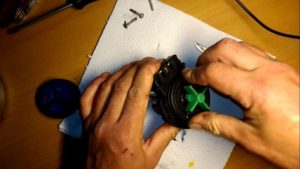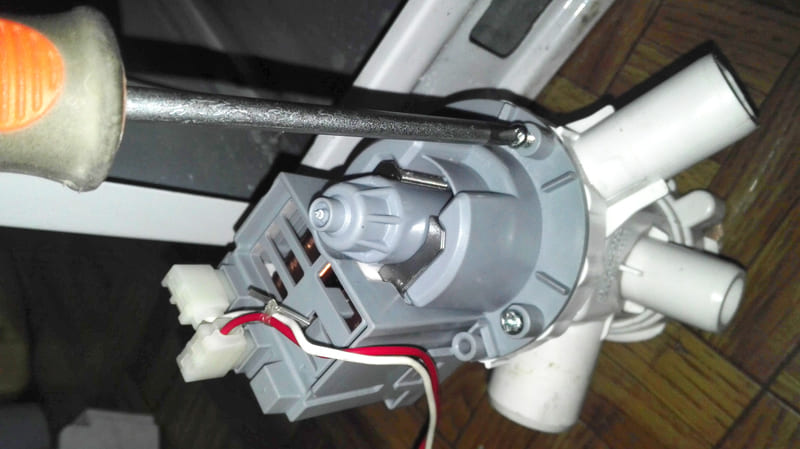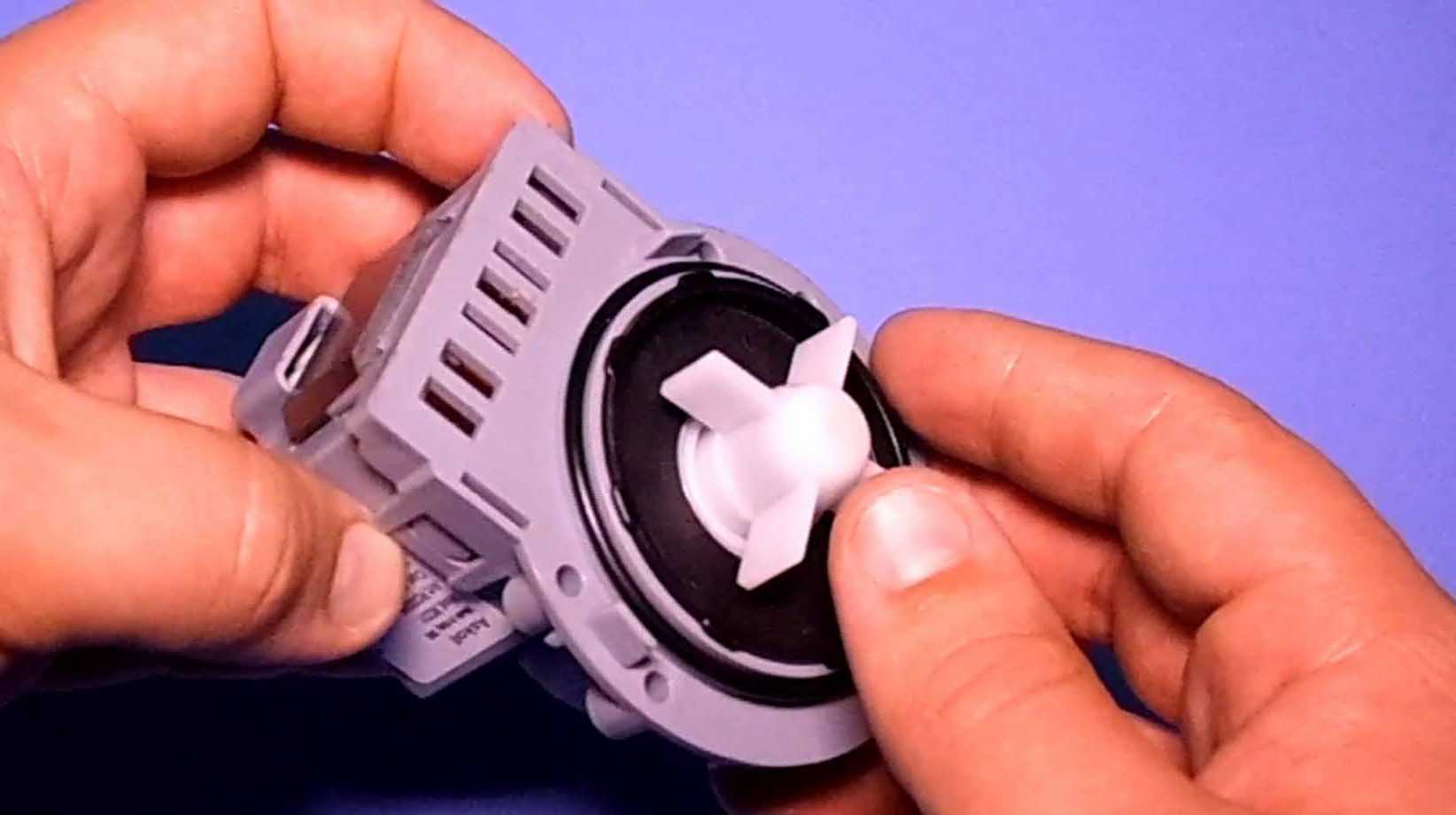 The masters jokingly call the pump of the device for washing clothes “the heart.” Its main task is the process of pumping water intended for washing and draining the waste liquid. From time to time, the pump has to be repaired or replaced with a new analogue, since it, like the electric motor, bears the maximum load, causing wear. One of the most common breakdowns is when the impeller of the washing machine pump comes off.
The masters jokingly call the pump of the device for washing clothes “the heart.” Its main task is the process of pumping water intended for washing and draining the waste liquid. From time to time, the pump has to be repaired or replaced with a new analogue, since it, like the electric motor, bears the maximum load, causing wear. One of the most common breakdowns is when the impeller of the washing machine pump comes off.
In this case, repairs are carried out on your own, and there are two ways to do this: reinstall the impeller in place or completely replace the pump. The first option does not give a long-term effect, because the fact of “flying off” confirms the wear of the seat. It would be safer to replace the pump.
Replacing the drain pump
If the impeller falls off the pump, it is recommended to install a new unit for pumping and draining water. We will try to explain clearly, how to dismantle the old pump and install a new one analogue Note that the operation algorithm is quite simple and is suitable for washing units from various manufacturers - LG, Samsung, Beko, Atlant, Candy, Ardo:
- the washing machine is carefully laid on its side, soft material is first spread under it so as not to scratch the body part;
- if the machine has a bottom, you should unscrew the fastening bolts and move the pan to the side;
- after this the back panel is removed;
- you will have to feel the drain hose with your hands to make sure there are no blockages inside;
- the ring holding the pipe is loosened, after which the hose is removed from the drain pump;
- the screws securing the pump are unscrewed, the electrical wiring is disconnected, the pump is removed out;
- a new analogue is being installed. All actions are carried out in reverse order.
In case in front of you washing equipment from Bosch, Siemens or AEG, you will have to act a little differently:
- First of all, the top panel is removed;
- the tray intended for filling in detergents is removed;
- the control panel fasteners are unscrewed, using a flat screwdriver, the latches made of plastic material are unfastened along the entire perimeter of the panel;
- Without disconnecting the electrical wires, carefully lay the panel on top;
- At the bottom of the washing machine there is a false panel (under the loading hatch door), which must be removed;
- loosen the clamp securing the cuff, remove it, tuck the rubber seal into the drum;
- disconnect the wiring going to the door lock;
- Unscrew the screws holding the front case panel and remove it;
- we find the drain pump and dismantle it;
- install the working element in the vacant space, connect the drain hose and electrical wiring;
- We assemble the washing machine in reverse order.

Impeller installation
When it is not possible to buy a new drain element, you can use a simple, but not so reliable repair option - install the impeller on the sealant. An impeller fixed in this way will function normally for some time, but soon it will fall off again and the drain system will fail.
However, if the impeller is broken and there is no time for normal repairs, do this:
- provide access to the impeller installation site;
- carefully “dry” the shaft on which the plastic element is installed;
- degrease the seat with a special compound, apply sealant or waterproof glue;
- install the impeller.
The impeller turns - what to do?
In such a situation, the washing machine drains the waste water from the tank, after which the pressure decreases, and ultimately the dirty water is drained either for a long time, or partially remains inside the washing mashine. At first glance, the drain pump looks quite functional, the impeller is tightly placed in the place intended for it. Then what could be the problem?
Most likely, the impeller is turning. In normal operation, if you rotate the impeller manually, it will move in jerks, confirming that the magnet located in the pump is coping with resistance normally.If the impeller begins to rotate freely without stopping, this means that a malfunction has occurred in the operation of the device. The cause of such spinning may be a foreign object that accidentally got into the drain system, or a normal defect made during assembly of the washing device.

Useful tips
Do not rush to disassemble the washing machine and change the drain pump - first determine exactly what the cause of the breakdown is. To do this you will have to follow simple steps:
- “listen” to the pump;
- open drain filter and clean it;
- clean the drain hose;
- determine how the pump impeller rotates;
- check the contact group and all sensors going to the pump.
A number of malfunctions can be easily determined by ear - just walk up to a running washing machine and listen. You should wait until the liquid is drained or withdrawn. When the pump starts to hum and tries to work intensively, but there is no water in the tank, or no sounds are heard from the pump, you have localized the breakdown.
Conclusion
As a rule, the solution is always clear - the drain pump is changed. Buy only branded analogues, which can be found using the numbers your washing machine model.










Good afternoon.
A problem has arisen: when draining, the machine (LG) hums and growls like a wounded orangutan.
I removed the pump, disassembled it, washed the impeller, and that’s what’s making the noise. In hand, removed from the pump, during testing/connection. I wiped everything dry and it was buzzing. I lubricated everything with oil and it buzzed. Should I buy a new one, or can I fix it?